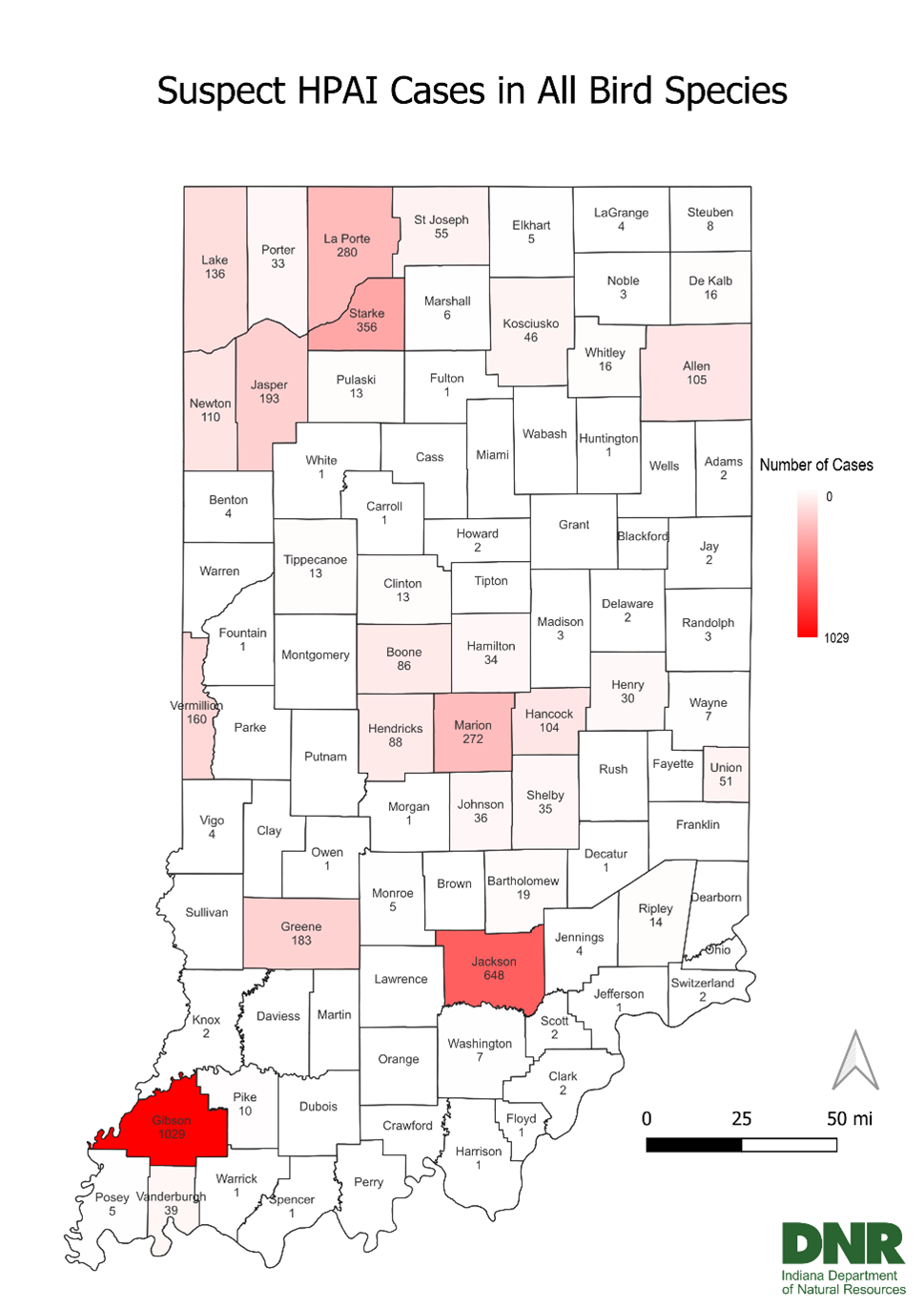About Avian Influenza
Avian influenza, or “bird flu,” is a disease caused by influenza viruses that usually spread between birds. Avian influenza viruses are common in wild birds, especially waterfowl, shorebirds, and raptors.
Highly pathogenic avian influenza (HPAI) refers to viruses that can produce severe and often fatal diseases in domestic poultry. The term HPAI does not necessarily mean that the virus will also cause illness in humans. The risk of HPAI to the general public is low.
For more information about avian influenza in humans, visit the Centers for Disease Control and Prevention (CDC) website.
Once introduced, HPAI can spread quickly from direct bird-to-bird or bird-to-mammal contact. It can also be spread indirectly through manure, equipment, vehicles, egg flats, crates, clothing and shoes, water, and, potentially, feed. Research continues to determine if there are other ways it can spread indirectly. HPAI can survive for long periods of time in water and at moderate temperatures, and the virus can survive indefinitely in frozen conditions.
Clinical Signs of Avian Influenza?
Clinical signs of avian influenza in birds include the following:
- Sudden death.
- Nervous system impairment (e.g., lack of coordination, swimming in circles, tremors, twisted neck).
- Lack of energy and appetite.
- Swelling of the head, eyelids, wattles, hocks, and comb, and purple discoloration of wattles, combs, and legs.
- Nasal discharge, cough or sneezing, and diarrhea.
- What is the status of avian influenza in Indiana?
- What animals get avian influenza?
- What is the risk to people?
- Are hunters at risk?
- What is DNR Fish & Wildlife doing?
- Should I remove dead birds from my property?
- How can people prevent the spread of HPAI?
- Who should I contact about avian influenza in poultry?
Additional Resources
- For additional information about avian influenza, visit the BOAH website or the USDA APHIS website.
- Find more information on human exposure on the Indiana Department of Health's website.

